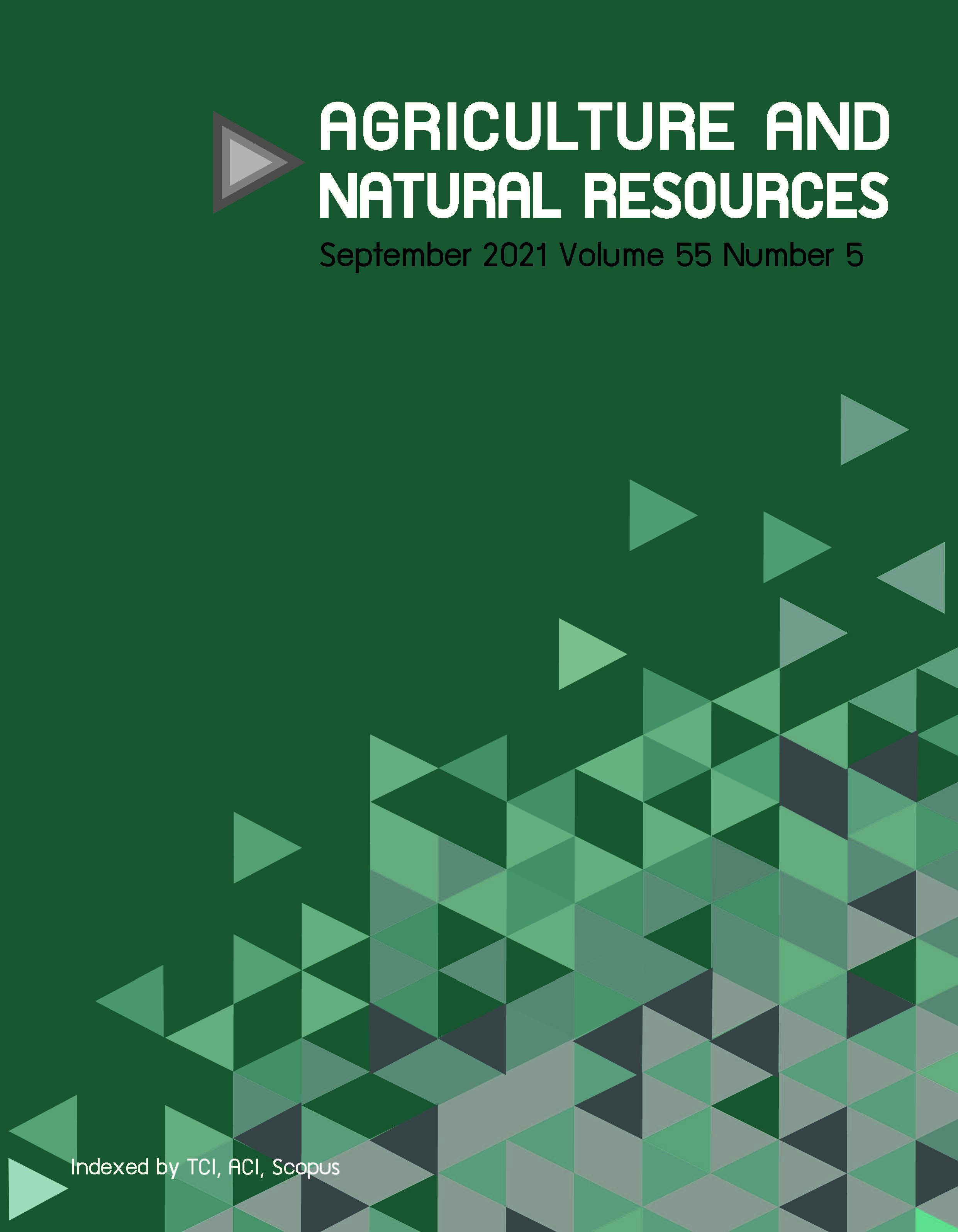Genetic conservation of bamboo in Loei province, Thailand: Identification, distribution and genetic diversity
Keywords:
Bamboo, Conservation, Distribution, Diversity, IdentificationAbstract
Over the past decade, deforestation has triggered an environmental crisis causing the extinction of some native plants worldwide. Therefore, in Thailand, a plant genetic conservation effort, as a Royal Project under the initiative of Princess Maha Chakri Sirindhorn, has been established with the ultimate goal of preserving biodiversity, conservation and preventing extinction of wild plants in Thailand. As part of this Royal Project, the current research surveyed bamboo distribution, identified bamboo species and evaluated the genetic diversity of native bamboo in three types of terrain (river basins, relatively flat areas and mountainous regions) in Loei province where bamboo diversity is rich. Bamboo was identified at the species level based on morphological characteristics (shape, color and culm length, rhizomes, shoots, leaves, flying shoots, culms, limbs, nodes, internodes, buds, hairs and sheaths). There were 34 bamboo species in Loei in 8 genera comprising 11 species of Bambusa, 6 of Dendrocalamus, 3 of Schizostachyum, 2 of Gigantochloa, Thyrsostachys, Vietnamosasa and Neohouzeaua, 1 of Melocalamus and 5 unknown genera. Different morphological characteristics of 22 bamboo species in 7 genera were selected from the 34 bamboo species for evaluation of their genetic diversity using 10 amplified fragment length polymorphism markers. The resulting information was used to construct a phylogenetic tree in which the 22 bamboo species could be divided into three groups. The phylogenic tree had Jaccard similarity coefficients in the range 0.1273–0.7281 with a cophenetic correlation of 0.9279, indicating a high degree of grouping.
Downloads
Published
How to Cite
Issue
Section
License
Copyright (c) 2021 Kasetsart University

This work is licensed under a Creative Commons Attribution-NonCommercial-NoDerivatives 4.0 International License.
online 2452-316X print 2468-1458/Copyright © 2022. This is an open access article under the CC BY-NC-ND license (http://creativecommons.org/licenses/by-nc-nd/4.0/),
production and hosting by Kasetsart University of Research and Development Institute on behalf of Kasetsart University.







